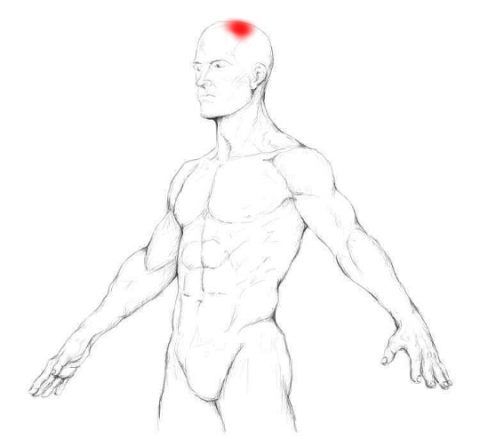Front of Forehead Pain: What It Means and What You Can Do About It
Front of forehead pain can be an annoying and sometimes worrying sensation. Whether it strikes in the middle of your workday or lingers quietly in the background, it can affect your focus, mood, and overall well-being. But what does it really mean when your forehead starts to ache? Let’s break it down.
1. What Is Front of Forehead Pain?
Front of forehead pain refers to any discomfort, pressure, or aching located specifically in the area above the eyebrows and between the temples. It’s a common type of headache and can have several underlying causes.
This pain is often associated with stress, eye strain, sinus congestion, or even dehydration. Sometimes, it might come and go quickly, but other times it can stick around for days, making daily tasks feel like a challenge.

2. Is It a Tension Headache or Something Else?
One of the most common culprits behind front of forehead pain is a tension headache. These headaches usually feel like a tight band squeezing your head, especially around the forehead. They’re often triggered by stress, poor posture, or long hours staring at screens.
However, not all forehead pain is due to tension headaches. It could also be:
Sinus headaches: Caused by sinus infections or allergies, often accompanied by nasal congestion or facial pressure.
Migraines: More intense than tension headaches, migraines may include nausea, light sensitivity, and throbbing pain.
Eye strain: Long periods of screen time or uncorrected vision issues can lead to forehead discomfort.
Cluster headaches: These are rare but intense headaches that can cause sharp pain around one eye or the forehead.
If your front of forehead pain is recurring or severe, it’s important to understand what kind of headache you’re dealing with.


3. How to Relieve Forehead Pain at Home?
Thankfully, many cases of front of forehead pain can be relieved with simple home remedies. Here are a few tried-and-true methods:
Apply a cold or warm compress: A cold pack can help reduce inflammation, while a warm compress may relax tense muscles.
Hydrate: Dehydration is a sneaky cause of headaches. Drinking plenty of water can ease the pain.
Take a break from screens: If you’ve been staring at your computer or phone too long, step away to rest your eyes and reduce eye strain.
Massage your forehead and temples: Gentle pressure can improve blood flow and relieve tension.
Use over-the-counter pain relief: Ibuprofen or acetaminophen can be helpful for short-term relief, but use them responsibly.
Creating a calm environment with low lighting and quiet can also help reduce the intensity of the pain.

4. When to See a Doctor? forehead Pain
While occasional front of forehead pain is usually harmless, there are times when it’s best to seek medical attention. Contact a doctor if:
The pain is severe and sudden
You experience vision changes or dizziness
The pain persists for more than a few days
You have a fever or stiff neck
Over-the-counter medications don’t help
Persistent or unusual forehead pain could signal a more serious condition, such as a neurological issue or an underlying infection.


5. Preventing Forehead Pain: Tips for Long-Term Relief
While occasional front of forehead pain might be unavoidable, there are practical steps you can take to reduce how often it happens. Preventing headaches before they start is the key to long-term relief and a better quality of life.
Here are some proven tips to help keep front of forehead pain at bay:
Manage your stress levels: Since tension is a leading cause of forehead pain, incorporating stress-reducing habits like meditation, yoga, or even deep breathing exercises can make a big difference.
Practice good posture: Slouching or hunching over a screen can strain your neck and forehead muscles. Keep your back straight, shoulders relaxed, and screen at eye level to reduce tension.
Limit screen time and take eye breaks: Follow the 20-20-20 rule—every 20 minutes, look at something 20 feet away for 20 seconds—to reduce eye strain that can lead to front of forehead pain.
Stay hydrated: Drinking enough water throughout the day can help prevent dehydration-related headaches.
Get consistent sleep: Poor sleep or irregular sleep patterns can trigger headaches. Aim for 7–9 hours of restful sleep each night.
Watch your diet: Skipping meals or consuming trigger foods (like processed meats, alcohol, or too much caffeine) can lead to headaches. Eat balanced meals at regular intervals.
Keep allergies and sinus issues in check: If you’re prone to sinus-related forehead pain, talk to your doctor about managing allergies or chronic sinus problems effectively.
Leave a Reply